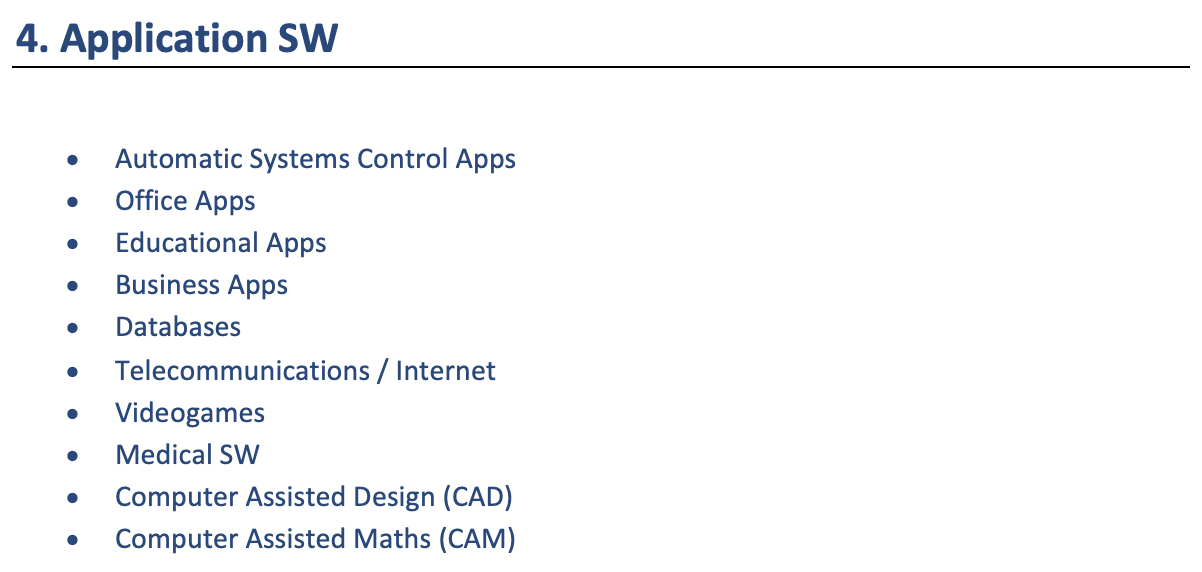2.1 Hardware and Software
types of software
📌 Operating System
- software to help standard users manage/use the computer without interfering/thinking of hardware
- software between hardware and software works, and helps users use hardware
- interface between users(real world) and computer(machine world)
manages/controls/administrator of my computer
- saved in secondary memory(HDD or SSD)
☑️ OS has four functions
1️⃣ File management, gestion de archivos
- managed closed files only, saved in secondary memory
as OS and closed files are both in secondary memory, this is an easy job for the OS
↔️ You can have a computer without HD, so File management is little important job of OS
- ➡️ FAT32, NTFS…
2️⃣ RAM management 🟰 Memory management
- when file is opened, and uploaded on the RAM
- upload on RAM and called process
↔️ You cannot have a computer w/o RAM, super duper important job of OS
- ➡️ Segmentation, Paging
3️⃣ Process Management
- how to distribute timing among the different processes
- ↔️ super duper important job of OS
4️⃣ Interruptions management
- when processes run, and temperature becomes too hot, OS would interfere
As I/O Manager
- ↔️ You can have a computer w/o peripherals, so Interruptions management is little important job of OS
👉🏻 So in hybrid stucture of the OS…
See 2.4 structure of OS
- That is the reason why in hybrid stucture of the OS,
- the kernel does two most important functions
- RAM management
- Process Management
- and the user server does the extra
- File management
- Interruptions management
✅ Levels of software
- All software can be divided into 4 different levels
1️⃣ Low Level SW
- machine code
- 0 and 1s
2️⃣ System/Base SW
- software that acts as an interface with a machine
- example: OS, Drivers
3️⃣ Programming SW
- applications for programming
- example: IDE with GUIs, visual studio
4️⃣ Application SW
- software of the users
- example: google maps
1
2
❓ How do you call the SW that acts as an interface?
- System/Base SW
This post is licensed under CC BY 4.0 by the author.





